
Rumpenheim Castle is a Schloss located in the banks of the Main river in the German city of Offenbach am Main.

Rumpenheim Castle is a Schloss located in the banks of the Main river in the German city of Offenbach am Main.
The origin of the palace dates back to the manor house of Johann Georg Seifert von Edelsheim, a politician serving the County of Hanau. The main core of the castle, which runs parallel to the Main, roughly corresponds to this manor house. Likewise, Seifert von Edelsheim bought land around the main house, which would end up forming the current palace park.
In 1768, some years after the annexation of the County of Hanau to the Electorate of Hesse in 1736, the Seifert family with Edelsheim sold the manor house to Prince Charles of Hesse-Kassel. In the early 1780s, he sold the palace to his brother Frederick. During the first half of the 19th century, various renovation works were carried out, including the construction of new stables and a new reorganization of the park. [1]
After the conquest of Hesse-Kassel by the Kingdom of Prussia in the context of the Austro-Prussian War, the palace became the private property of the branch of the House of Hesse descended from the Prince Frederick of Hesse-Cassel. This branch, known as Hesse-Kassel-Rumpenheim, continued to live in the palace until 1902, when, due to the marriage of Prince Frederick Charles to Princess Margaret of Prussia, after the death of her mother Victoria, dowager of Frederick III, German Emperor moved to the castle of Friderichshof.1 It was considered a common property of the sons of Frederick. Frederick's unmarried male children, Princes Frederick William and George Charles, died in 1876 and 1881, inhabited the castle on a regular basis. [2]

Paradoxically, the second half of the 19th century became a time of splendor for the castle as a destination for the European royalty related to the House of Hesse-Kassel, especially in summer. Among others, the following can be highlighted: [3]

In 1943, the main part of the structure was bombed, as a consequence of the Second World War. The building continued to be in a state of ruin and abandonment and was acquired in 1965 from the House of Hesse by the town of Offenbach am Mein. Subsequently, it has been gradually restored and today houses luxury apartments. [1] [6]
In its original composition before the restoration after the damage suffered in the Second World War, the palace was made up of a main nucleus parallel to the Main river, of three heights finished off by a last floor under cover. This main body was flanked by two towers that had one more floor than the main body. On the façade opposite the river, the palace had two parallel wings arranged perpendicular to the main façade, forming a cour d'honneur. The wings had a single floor and a floor below deck and were finished off at their final ends with two two-story pavilions and a floor below deck. [1] The interior was richly decorated with antique furniture.
The palace was characteristically painted white and had slate roofs.
At present, the structure is, in general lines, preserved. [1]

Alexandra of Denmark was Queen of the United Kingdom and the British Dominions, and Empress of India, from 22 January 1901 to 6 May 1910 as the wife of King-Emperor Edward VII.

Christian IX was King of Denmark from 15 November 1863 until his death in 1906. From 1863 to 1864, he was concurrently Duke of Schleswig, Holstein and Lauenburg.

Princess Augusta of Cambridge was a member of the British royal family, a granddaughter of George III. She married into the Grand Ducal House of Mecklenburg-Strelitz and became Grand Duchess of Mecklenburg-Strelitz.

Princess Augusta of Hesse-Kassel was the wife of Prince Adolphus, Duke of Cambridge, the tenth-born child, and seventh son, of George III of the United Kingdom and Charlotte of Mecklenburg-Strelitz. The longest-lived daughter-in-law of George III, she was the maternal grandmother of Mary of Teck, wife of George V.

Princess Louise of Denmark and Norway was born to Frederick V of Denmark and Louise of Great Britain. Her eldest daughter, Marie of Hesse-Kassel, was the wife of Frederick VI of Denmark.

Margaret of Prussia was the youngest child of Frederick III, German Emperor, and Victoria, Princess Royal. She was also the younger sister of Emperor Wilhelm II and the granddaughter of Queen Victoria. She married Prince Frederick Charles of Hesse, the elected King of Finland, making her the would-be Queen of Finland had he not decided to renounce the throne on 14 December 1918. In 1926, they assumed the titles of Landgrave and Landgravine of Hesse. The couple had six sons and lost three in the First and Second World Wars, respectively.
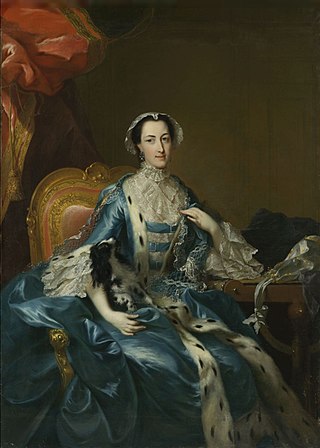
Mary of Great Britain was the second-youngest daughter of George II of Great Britain and his wife, Caroline of Ansbach, and Landgravine of Hesse-Kassel as the wife of Frederick II, Landgrave of Hesse-Kassel.

Frederick II was Landgrave of Hesse-Kassel from 1760 to 1785. He ruled as an enlightened despot, and raised money by renting soldiers to Great Britain to help fight the American Revolutionary War. He combined Enlightenment ideas with Christian values, cameralist plans for central control of the economy, and a militaristic approach toward international diplomacy.
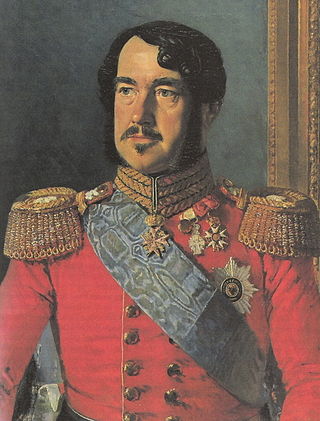
Prince William of Hesse-Kassel was the first son of Prince Frederick of Hesse-Kassel and Princess Caroline of Nassau-Usingen. He was titular Landgrave of Hesse-Kassel-(Rumpenheim) and for many years heir presumptive to the throne of Hesse-Kassel.

Prince Charles of Hesse-Kassel was a cadet member of the house of Hesse-Kassel and a Danish general field marshal. Brought up with relatives at the Danish court, he spent most of his life in Denmark, serving as royal governor of the twin duchies of Schleswig-Holstein from 1769 to 1836 and commander-in-chief of the Norwegian army from 1772 to 1814.

Prince Frederick of Hesse-Kassel was a younger member of the dynasty that ruled the Landgraviate of Hesse-Kassel and a Danish general.

Prince Wolfgang of Hesse-Kassel was the designated Hereditary Prince of the monarchy of Finland, and as such, already called the Crown Prince of Finland officially until 14 December 1918, and also afterwards by some monarchists.
Donatus, Prince and Landgrave of Hesse is a German businessman and the head of the House of Brabant and the House of Hesse.

Princess Wilhelmina Caroline of Denmark and Norway, was the Landgravine consort of Hesse-Kassel and later the Electress of Hesse-Kassel by marriage to William I, Elector of Hesse.
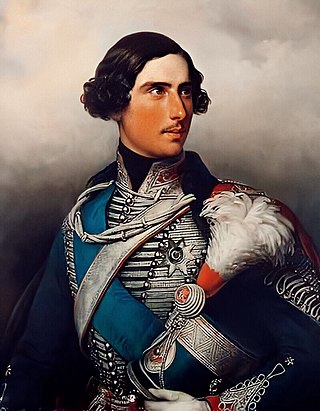
Frederick William George Adolphus, Landgrave of Hesse was the only son of Wilhelm I, Landgrave of Hesse-Kassel-Rumpenheim and Princess Louise Charlotte of Denmark.

Karoline Amalie of Hesse-Kassel, was a German princess and member of the House of Hesse-Kassel by birth, and Duchess of Saxe-Gotha-Altenburg by marriage.
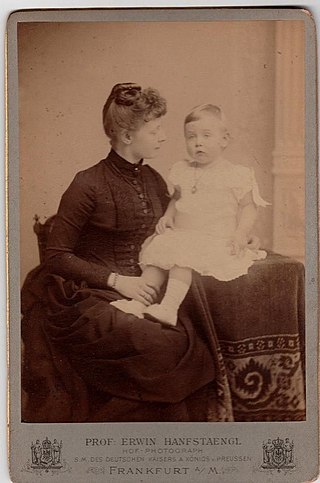
Princess Elizabeth Charlotte Alexandra Mary Louise of Hesse-Kassel, was a Princess of Hesse-Kassel by birth and, by her marriage to Leopold, Hereditary Prince of Anhalt, the Hereditary Princess of Anhalt.
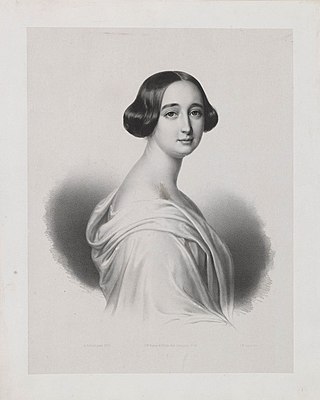
Auguste Sophie Friederike Marie Caroline Julie of Hesse-Kassel, known as Princess Augusta, was a Princess of Hesse-Cassel, a daughter of Prince William of Hesse-Kassel (1787–1867) and Princess Charlotte of Denmark (1789-1864). She spent most of her life in Denmark.

Princess Claudine of Teck, known as Countess Claudine von Hohenstein until 1863, was a 19th-century Austrian noblewoman directly related to German and English royalty.

Princess Amalia of Teck, known as Countess Amalie of Hohenstein until 1863, was an Austrian noblewoman closely related to the royal houses of Württemberg and the United Kingdom.